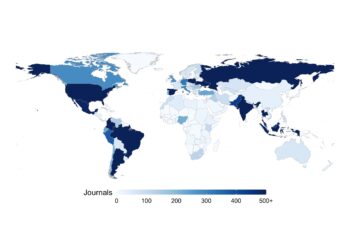ChatGPT and other Large Language Models (LLMs) have been everywhere for the last few months, raising concerns about their impact on everything happening in our community, from teaching to research to publishing. I wanted to share a few links that have helped shape my thinking about what exactly LLMs offer and where things are going.
First, it’s important to understand just what ChatGPT is. We’ve had a pair of articles (“Did ChatGPT Just Lie to Me?“, and “The Efficacy of ChatGPT — Is it Time for the Librarians to Go Home?“) that describe interactions with ChatGPT where it seems to invent research article citations. What’s important to understand here is that ChatGPT isn’t looking things up on the web or answering questions. It is, as author Ryan North notes, “a word prediction machine”. ChatGPT essentially predicts which words are likely to go together in response to a prompt. When you call it out on lying about fake citations, it is not apologizing, it is just predicting that the words “I’m sorry” would be the most likely to occur in a response.
This is all best described in this New Yorker article by Ted Chiang. As Chiang explains, ChatGPT is doing the same sort of thing as a blurry jpeg file. Jpegs are used all over the internet because they allow for file compression, so they end up as small sized files that can be downloaded quickly by a web browser. But that compression is what’s called “lossy”, meaning that to make the file size smaller, information is discarded. The smaller you make the file, the more pixels are lost. But the images end up looking fine, because of a process called “interpolation”. Through that process, when an image display program has to figure out what was in a pixel that was lost, it looks at the pixels around that spot and calculates the average and uses it to fill in the blank:
This is what ChatGPT does when it’s prompted to describe, say, losing a sock in the dryer using the style of the Declaration of Independence: it is taking two points in “lexical space” and generating the text that would occupy the location between them.
Another useful explainer is a Twitter thread by the always informative Steve Sinofsky, former leader at Microsoft (and a friend since grade school). In this wide-ranging thread (second part begins here), Sinofsky looks at the incredible potential of LLMs, but also how the market is already responding negatively and may fail to recognize that potential. Issues of copyright are particularly relevant for a tool that directly provides you an answer. Websites are happy to have a search engine crawl their content, because in return Google and its ilk send traffic to the website. Here, there’s no traffic. The LLM will answer the question, end of transaction. Sinofsky predicts missed opportunities due to a conservative approach from businesses through “Responsible AI”. As he puts it, this is “the first time a technology spawned an almost police action before it was even deployed.”
And finally, in the video below, programmer and pundit Tom Scott talks about the existential crisis his attempt to fix an email problem using ChatGPT caused. In the video, he describes the sigmoid curve of technology development. We have no idea how far along the curve we are with LLMs like ChatGPT. If we’re at the top of the curve , then little is likely to change and it will just enhance what we already do. If we’re in the middle of the curve, then we’ll get some great new tools from it. But if we’re just at the beginning of the curve, Scott predicts it will be another Napster moment, and everything is about to change for a huge number of professions and activities. Not knowing what’s coming next can be a scary moment, particularly for those with a “comfortable world” they’ve settled down in.
Food for thought for your weekend.
Discussion
2 Thoughts on "Thinking About ChatGPT and the Future — Where Are We On AI’s Development Curve?"
Love to see a mention of the very talented Ryan North!



